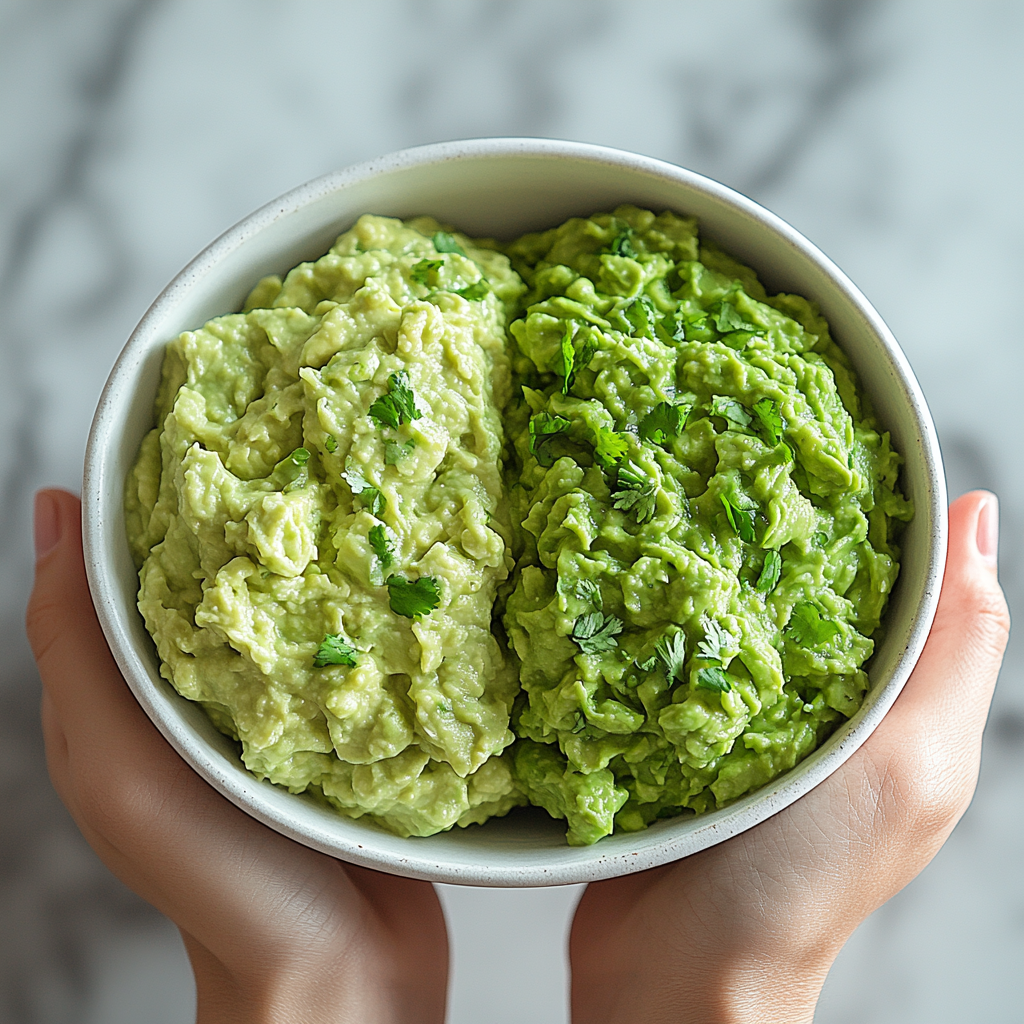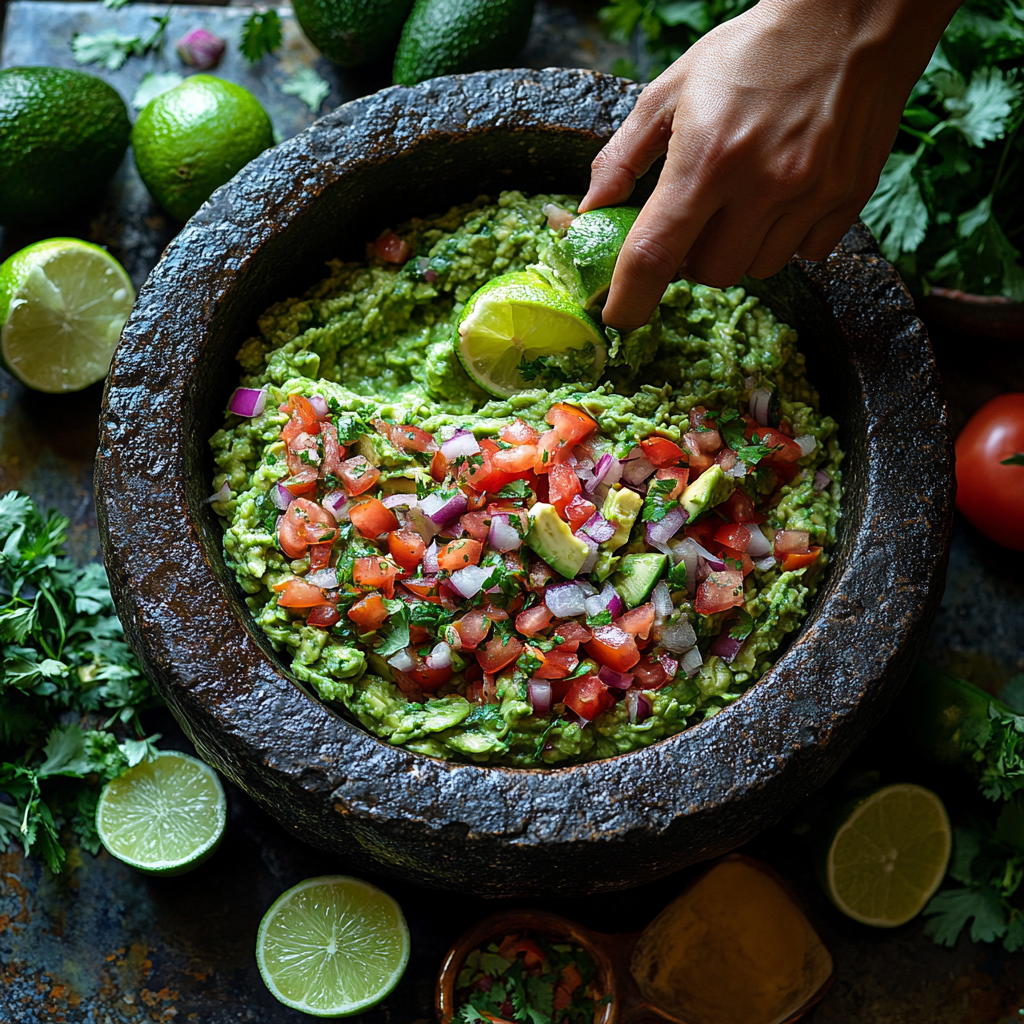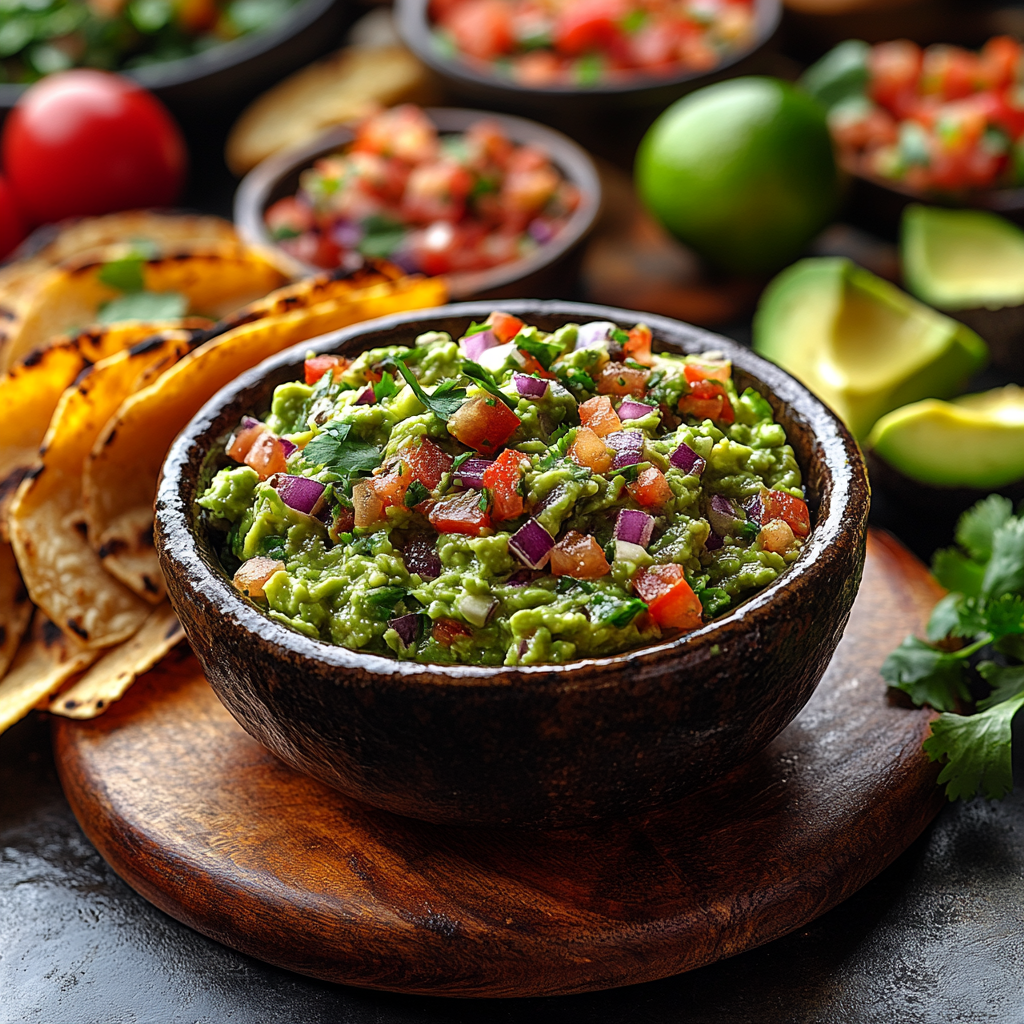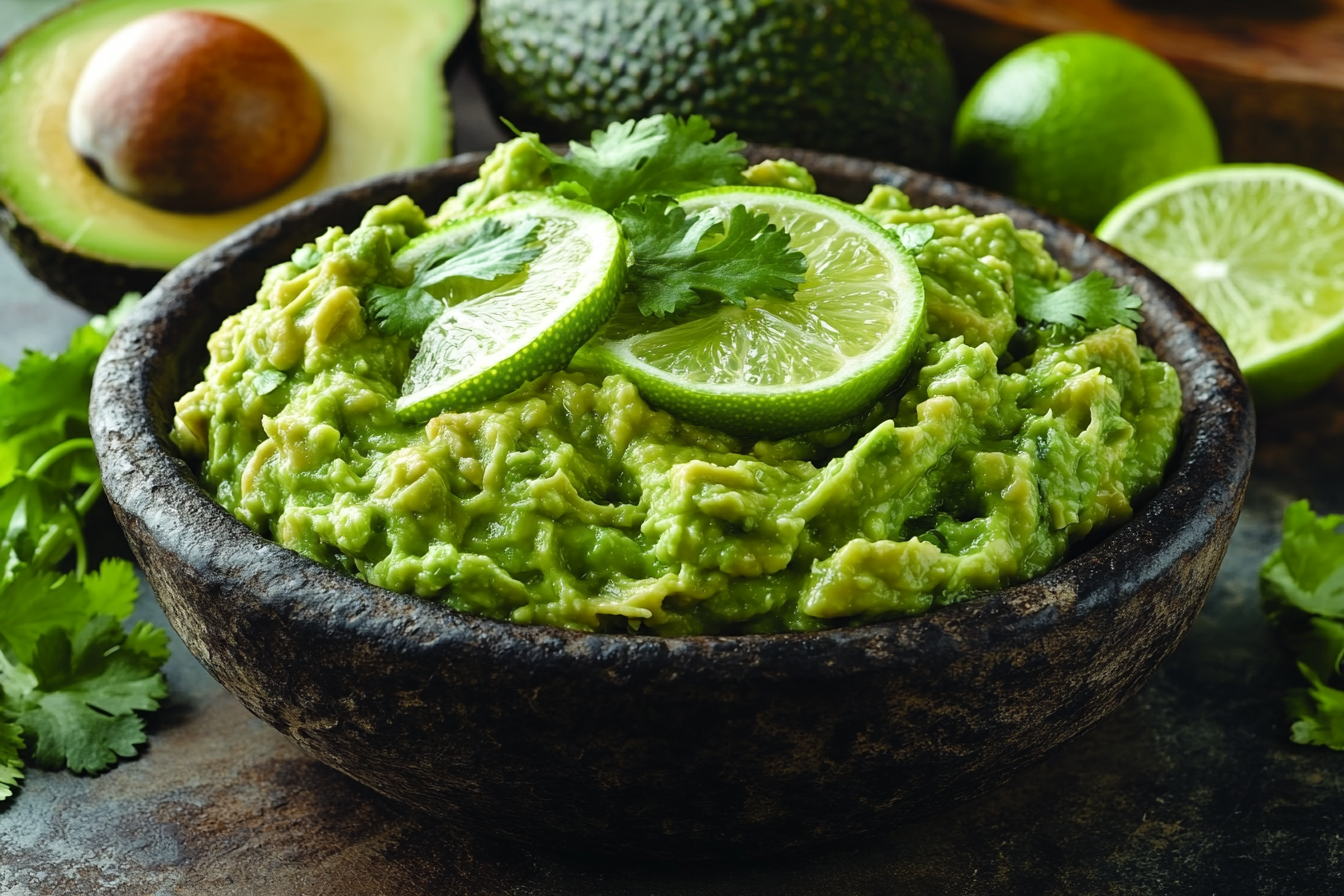Introduction
Guacamole, a creamy, flavorful dip made primarily from avocados, is a popular accompaniment to a variety of dishes. For instance, whether you enjoy it with chips, as a topping for tacos, or as a spread on toast, guacamole remains a versatile and beloved recipe. However, one question often stirs debate among guacamole enthusiasts: Does guacamole need lime juice?
In this comprehensive guide, we’ll delve into the importance of lime juice in guacamole, explore alternatives, and answer the burning question: Is lime juice really necessary? By the end of this article, you’ll have a thorough understanding of how lime juice affects guacamole and whether you can skip it without sacrificing taste or quality.
The Essential Role of Lime Juice in Guacamole
Enhancing Flavor: The Citrus Kick
Cooks commonly add lime juice to guacamole to enhance its flavor. In addition, they use it to prevent the avocado from browning. Moreover, this citrus ingredient has been a staple in traditional Mexican guacamole recipes.
Example: Imagine eating avocado on its own—it’s rich, creamy, and somewhat fatty. While these characteristics are pleasant, they can be overwhelming. Lime juice cuts through this richness, adding a fresh, tangy note that elevates the overall taste. It’s similar to how a squeeze of lemon enhances the flavor of seafood by balancing its natural richness.
The Science Behind Lime Juice: Preventing Browning

One of the most important functions of lime juice in guacamole is its ability to prevent browning. Avocados contain an enzyme called polyphenol oxidase, which reacts with oxygen and makes the fruit turn brown—a process known as oxidation. Similarly, this is the same process that causes apples or bananas to brown after being sliced.
Lime juice, rich in citric acid, helps slow down this browning process. Specifically, the lime juice lowers the surface pH of the avocado with its acid, which stops the enzyme from reacting with oxygen. Consequently, guacamole stays fresh and green for a longer period, making it visually appealing and appetizing.
Detailed Explanation: The browning of avocado is not just an aesthetic issue; in fact, it can also affect the taste and texture of the guacamole. Browning may impart a slightly bitter taste and a mushy texture, which is far from the ideal creamy consistency most people desire. By adding lime juice, you preserve both the appearance and the quality of the guacamole.
The Cultural Significance of Lime Juice in Guacamole

Lime juice traditionally flavors Mexican guacamole recipes. Furthermore, in Mexico, limes are widely used in cooking, not only in guacamole but also in salsas, ceviches, and many other dishes. The inclusion of lime juice in guacamole is not just about flavor; instead, it’s about respecting the authenticity and cultural heritage of the dish.
Removing lime juice from guacamole might change the flavor profile in a way that deviates from the traditional recipe. For those who value the cultural significance of food, maintaining the integrity of the recipe is essential.
Historical Context: The Aztecs, who are credited with the creation of guacamole, used local ingredients like avocados, tomatoes, and chili peppers. While limes were introduced to the Americas by the Spanish, the use of lime juice in guacamole quickly became a staple, blending indigenous and European culinary practices.
Exploring Alternatives to Lime Juice in Guacamole
While lime juice is the traditional choice, there are situations where you might not have any on hand, or you may want to experiment with different flavors. In such cases, here are some alternatives to lime juice that can be used in guacamole:
Lemon Juice: A Close Cousin
Lemon juice is the most commonly recommended substitute for lime juice. Like limes, lemons are citrus fruits with a high acid content, which means they can also prevent browning and enhance flavor. Nevertheless, lemon juice tends to be slightly sweeter and less tart than lime juice, which can subtly alter the taste of your guacamole.
Usage Tip: If you’re using lemon juice as a substitute, start with a smaller amount and adjust to taste. This will help you avoid making the guacamole too sweet. Lemon juice is especially useful if you prefer a milder citrus flavor or if you want to try a different twist on the classic guacamole recipe.
Vinegar: A Bold Substitute
Vinegar, particularly apple cider vinegar or white vinegar, can be used as a lime juice substitute in guacamole. Because vinegar is highly acidic, it is effective in preventing browning. However, vinegar has a much stronger and sharper taste than lime juice, so it should be used sparingly.
Flavor Profile: Apple cider vinegar adds a fruity note to the guacamole, while white vinegar provides a more neutral acidity. Both types of vinegar can dramatically change the flavor of your guacamole, so they’re best suited for those who enjoy a more robust taste.
Citric Acid: The Pure Solution
If you want to maintain the acidity of lime juice without adding any extra liquid, citric acid powder is a great option. As a natural component of citrus fruits, citric acid is available in powdered form. Since it’s highly concentrated, a small amount goes a long way.
Other Citrus Juices: Orange and Grapefruit
For those who want to experiment with different flavors, other citrus juices like orange or grapefruit can be used in guacamole. Both of these juices will add a unique twist to the traditional recipe, with orange juice imparting a sweet and fruity note, and grapefruit juice adding a slightly bitter and tangy flavor.
Creative Twist: Combining lime juice with a splash of orange or grapefruit juice can create a more complex flavor profile. This is an excellent option for those who want to put a creative spin on their guacamole while still preserving the traditional elements.
The Debate: Does Guacamole Really Need Lime Juice?
Now that we’ve explored the traditional role of lime juice in guacamole and its alternatives, it’s time to answer the central question: Does guacamole really need lime juice?
Arguments in Favor of Lime Juice
- Flavor Enhancement: Lime juice adds a bright, zesty flavor that enhances the richness of avocados. Without it, guacamole may taste bland or heavy.
- Preservation: Lime juice slows down oxidation, keeping guacamole green and fresh for longer. This is especially important if you’re preparing guacamole in advance or want to store leftovers.
- Cultural Authenticity: Lime juice is a traditional ingredient in Mexican guacamole recipes. Including it maintains the cultural integrity of the dish.
Arguments Against Lime Juice
- Overpowering Flavor: Some people believe that lime juice can overpower the delicate flavor of avocados. They prefer guacamole that highlights the natural taste of the avocado without the added citrus punch.
- Personal Preference: Taste is subjective, and some individuals may simply prefer their guacamole without lime juice. In such cases, using alternatives or omitting lime juice altogether can still result in a delicious dip.
- Dietary Considerations: For those on a low-acid diet or with citrus allergies, lime juice may not be suitable. In these instances, alternative ingredients or methods can be used to achieve similar results.
How to Make the Perfect Guacamole: With and Without Lime Juice
Now that we’ve covered the theory, let’s move on to the practical side of making guacamole. Below are two recipes: one with lime juice and one without, so you can try both and decide which you prefer.
Traditional Guacamole Recipe with Lime Juice
Ingredients:
- 2 ripe avocados
- 1 lime (juiced)
- 1/2 teaspoon salt
- 1/4 cup diced onion
- 1 small tomato, diced
- 1 tablespoon chopped cilantro
- 1 clove garlic, minced
- 1/4 teaspoon ground cumin (optional)
- 1 pinch of cayenne pepper (optional)
Instructions:
- Cut the avocados in half, remove the pit, and scoop the flesh into a bowl.
- Mash the avocados with a fork or potato masher to your desired consistency.
- Add the lime juice, salt, onion, tomato, cilantro, garlic, cumin, and cayenne pepper. Mix until well combined.
- Taste and adjust seasoning as needed.
- Serve immediately or store it in an airtight container.
Guacamole Recipe Without Lime Juice
Ingredients:
- 2 ripe avocados
- 1/2 teaspoon salt
- 1/4 cup diced onion
- 1 small tomato, diced
- 1 tablespoon chopped cilantro
- 1 clove garlic, minced
- 1/4 teaspoon ground cumin (optional)
- 1 tablespoon apple cider vinegar or lemon juice (as an alternative to lime juice)
- 1 pinch of cayenne pepper (optional)
Instructions:
- Cut the avocados in half, remove the pit, and scoop the flesh into a bowl.
- Mash the avocados to your preferred texture.
- Add the salt, onion, tomato, cilantro, garlic, cumin, and cayenne pepper. If using vinegar or lemon juice, add it now.
- Mix thoroughly and taste. Adjust seasoning as necessary.
- Serve immediately, or if you’re making it ahead, cover with plastic wrap directly on the surface of the guacamole to prevent browning.
Additional Tips for Making the Best Guacamole
Choosing the Right Avocados
The type of avocado you use can greatly affect the texture and flavor of your guacamole. Hass avocados are generally preferred due to their creamy texture and rich flavor. They also have a higher oil content, which makes the guacamole smoother and more luxurious.
Ripeness: Make sure to use ripe avocados for the best results. A ripe avocado should yield slightly to gentle pressure when squeezed. If it’s too firm, it may be underripe and hard to mash. If it’s too soft, it may be overripe and could have brown spots inside.
Adding Extra Ingredients
While the basic guacamole recipe is simple, there are many ways to customize it to your taste:
- Spicy Guacamole: Add finely chopped jalapeño or serrano peppers for heat. You can also add a dash of hot sauce or a pinch of crushed red pepper flakes.
- Creamy Guacamole: For an extra creamy texture, mix in a dollop of sour cream or Greek yogurt.
- Chunky Guacamole: If you prefer a chunkier texture, leave some of the avocado pieces intact rather than mashing them completely.
Serving Suggestions
Guacamole is incredibly versatile and can be served in various ways:
- As a Dip: The most common way to enjoy guacamole is as a dip with tortilla chips. You can also serve it with vegetable sticks, pita bread, or crackers.
- On Tacos: Guacamole makes an excellent topping for tacos, adding creaminess and flavor to each bite.
- With Grilled Meats: Serve guacamole alongside grilled chicken, steak, or fish for a delicious and healthy accompaniment.
- On Toast: Avocado toast is a trendy breakfast option, and adding guacamole instead of plain avocado takes it to the next level.

Internal Linking Opportunities
When discussing the benefits of lime juice in guacamole, here are some internal linking opportunities to enrich your article and guide readers to other relevant content on your website:
- Link to the 4-Ingredient Guacamole Recipe when discussing the basic ingredients of guacamole. This will help readers who are looking for a simple, quick guacamole recipe.
- Refer to the What Not to Do When Making Guacamole article to emphasize common mistakes, such as forgetting the lime juice or over-mashing the avocado.
- Mention the Difference Between Mexican and American Guacamole when talking about the cultural significance of lime juice in traditional recipes.
Conclusion
In the debate over whether guacamole needs lime juice, it’s clear that while lime juice plays a significant role in flavor enhancement and preservation, there are valid reasons and alternatives for those who choose to omit it. Regardless of whether you stick to tradition or prefer to experiment with other ingredients, understanding the impact of lime juice on your guacamole will help you create the perfect dip to suit your taste.

